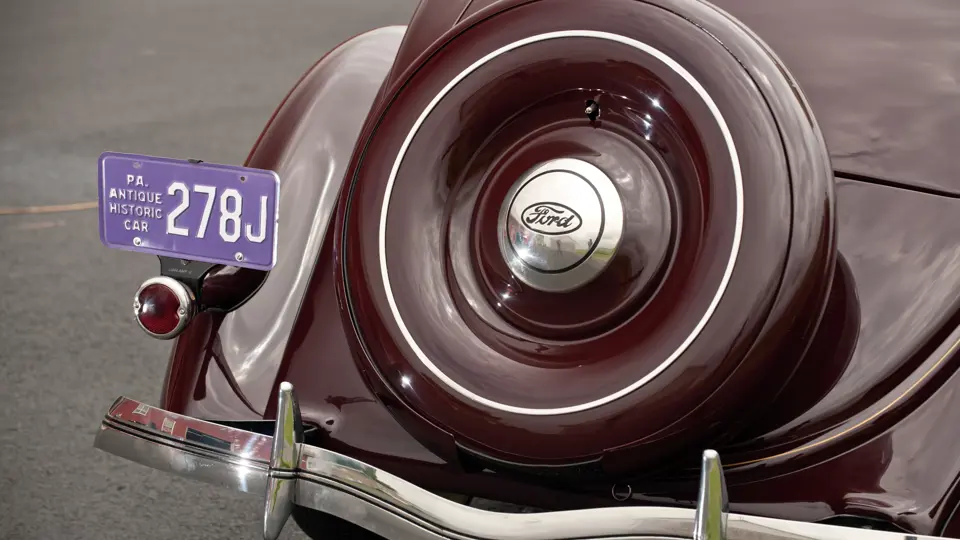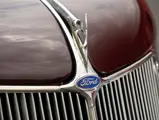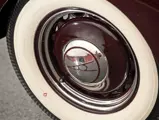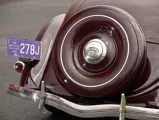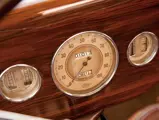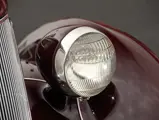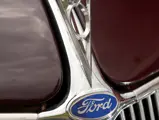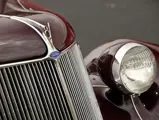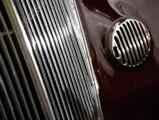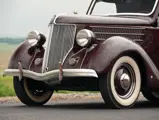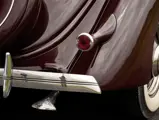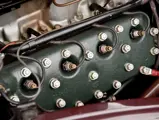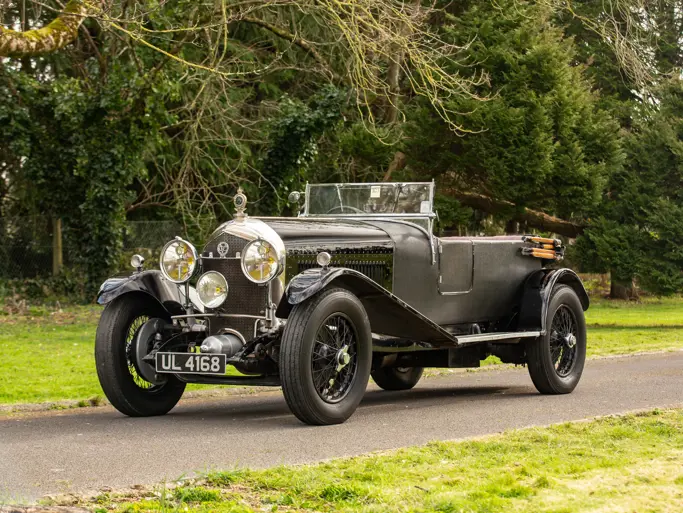Model 68. 85 bhp, 221 cu. in. L-head V-8 engine, three-speed sliding-gear manual transmission, solid front and ¾-floating rear axles with transverse leaf springs, and four-wheel mechanical drum brakes. Wheelbase: 112 in.
• Dearborn Award and AACA Senior National First Prize winner
• Older show-quality restoration
• From the collection of Ray Bowersox
Edsel Ford loved boats. Famed designer E.T. “Bob” Gregorie, who worked closely with him on so many of Ford Motor Company’s pre-war design icons, including the Lincoln Continental, later recalled that Edsel Ford’s appreciation of nautical design themes greatly influenced his stylistic direction and that of the Ford design team during the 1930s.
Other manufacturers were slow to catch on to Ford’s trendsetting designs of the 1930s though, no doubt discouraged by Chrysler’s unfortunate experience with its advanced but short-lived Airflow. However, Ford’s increasing emphasis on design and its two-pronged attack of Standard and upscale, well-equipped DeLuxe models strongly stimulated sales, even during the long climb out of the Great Depression. The 1936 Ford model lineup is a perfect case in point.
The hood began with a sharp body-colored radiator housing, which was radically V-shaped and highlighted in DeLuxe models by thin vertical chrome bars echoed in a double row of hood side louvers separated by thin chrome spears. Since Edsel was never much for embellishment, body accents were subtle, defining features that refined the form and function of the sheet metal rather than being discreet design elements themselves. The fenders were fully skirted in both the front and back, hiding the car’s chassis completely from view. Finally, gracefully formed bumpers and gracefully raked windshields provided the crowing touches. In short, the 1936 Ford models conferred an unmatched impression of power and speed belying their popular-priced market positioning.
Stylistic considerations aside, 1936 saw Ford reach several milestones, perhaps most notably a robust 17.9 million dollar profit. The year 1936 also saw the landmark 20 millionth Ford built. In addition, the success of the “flathead” V-8 was endorsed in the market by the production of the three millionth unit. It was a year of consolidation and realization of the tremendous investments that Ford had been making in design, development, and production enhancements. The Cabriolet, in particular, represented the upper end of the Ford model range, skillfully combining the open-air sportiness of a convertible with the crisp lines and practical weather protection of a closed car enhanced by the padded convertible top and Victoria-style blind rear quarters. Just 4,616 Cabriolets were produced for 1936, out of a total calendar-year production of nearly 800,000 cars, and today, survivors are far rarer, as exemplified by this multiple national-level award winner.
Handsomely finished in rich Ford Maroon, this 1936 Ford Cabriolet clearly continues to benefit from an older, high-quality restoration and remains beautiful in presentation. On the show field, this example earned AACA Senior National First Prize honors and the National Dearborn Award from the Early V-8 Ford Club, with both accolades received in 1991. The Cabriolet was acquired by the current owner around 2000 and has since resided in his noted collection of the finest American cars ever produced. Now offered for sale only to reduce his collection to a more-manageable size, this 1936 Ford Cabriolet simply remains a terrific example of the inspired design genius of Edsel Ford and Bob Gregorie during the 1930s.


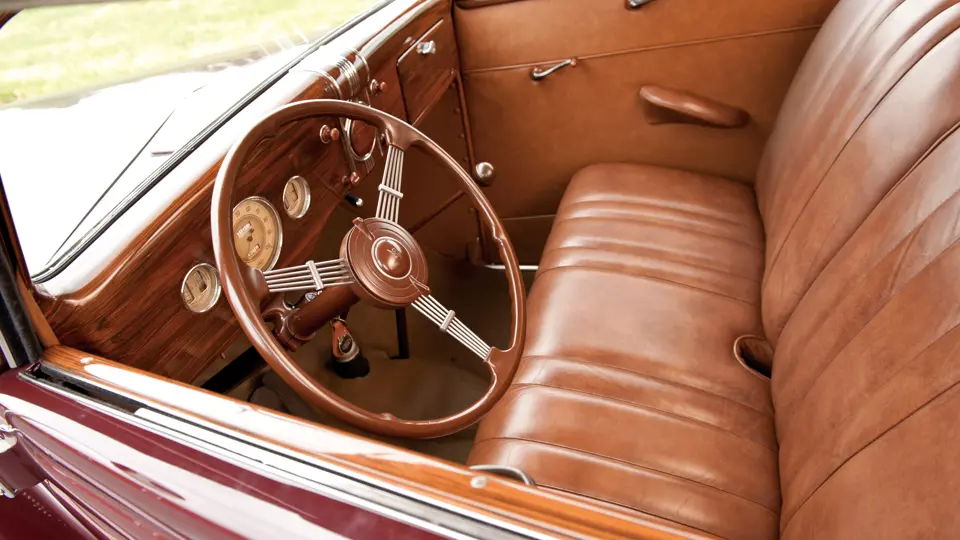

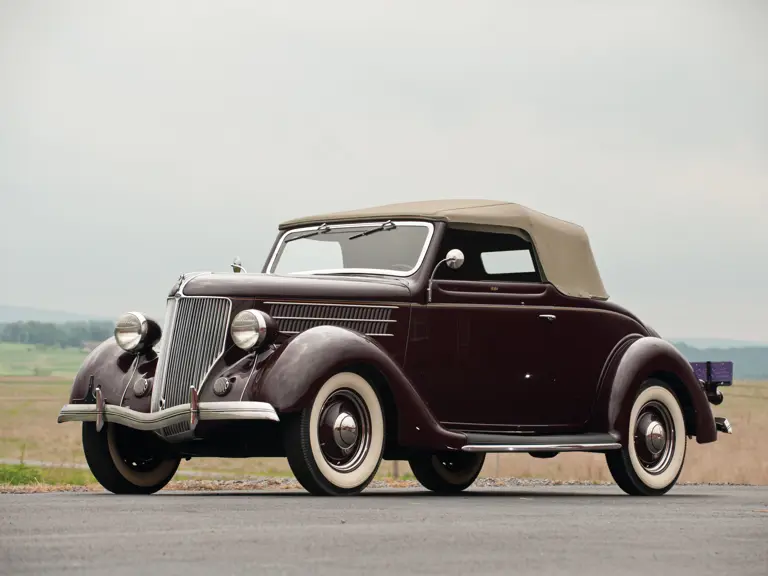
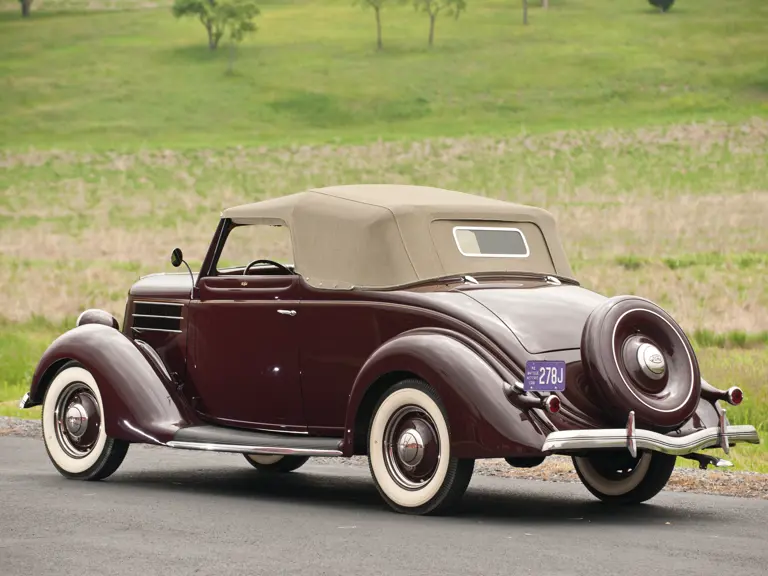

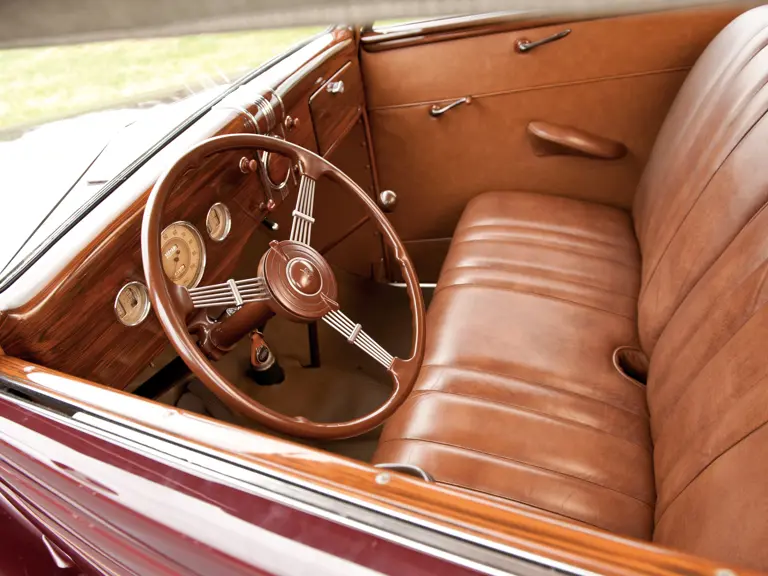
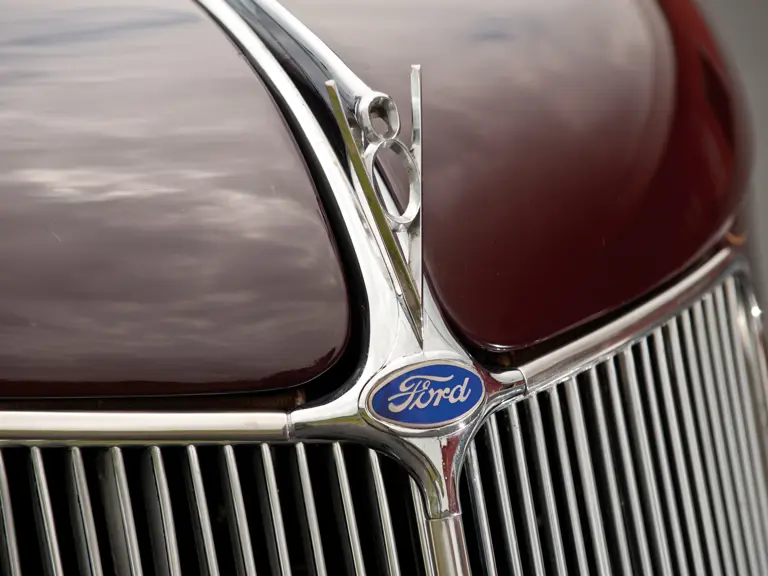
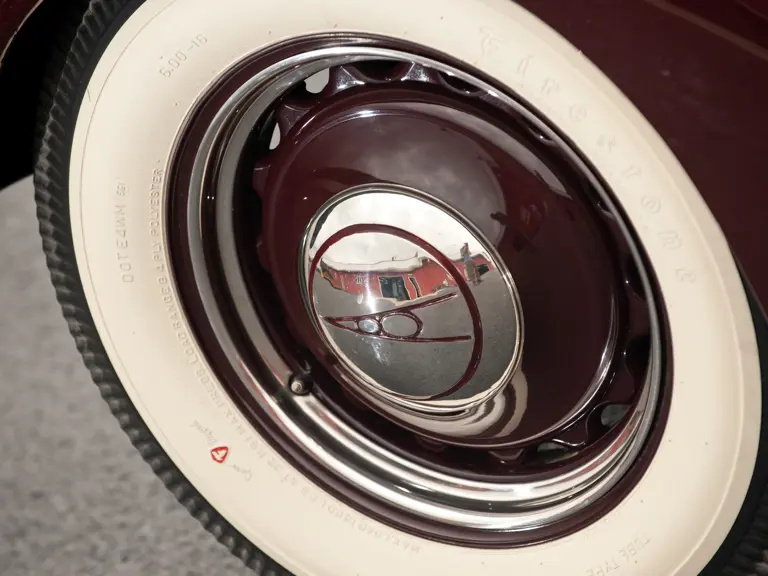
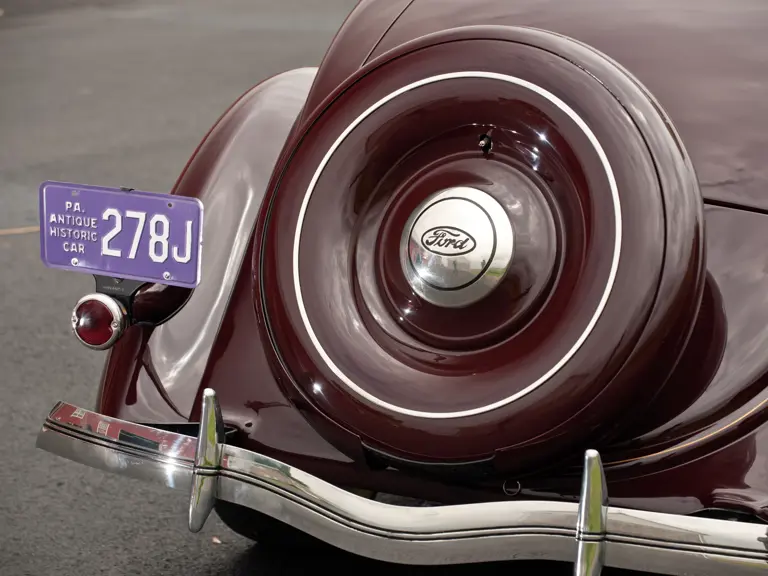
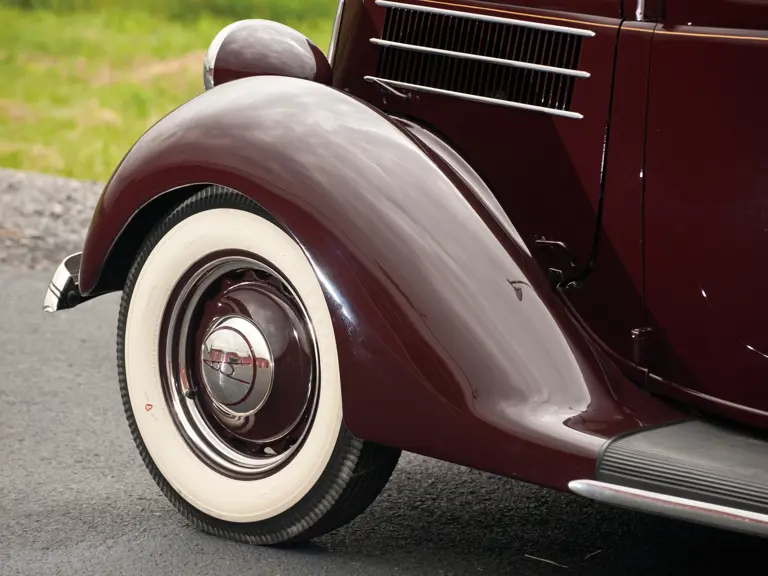

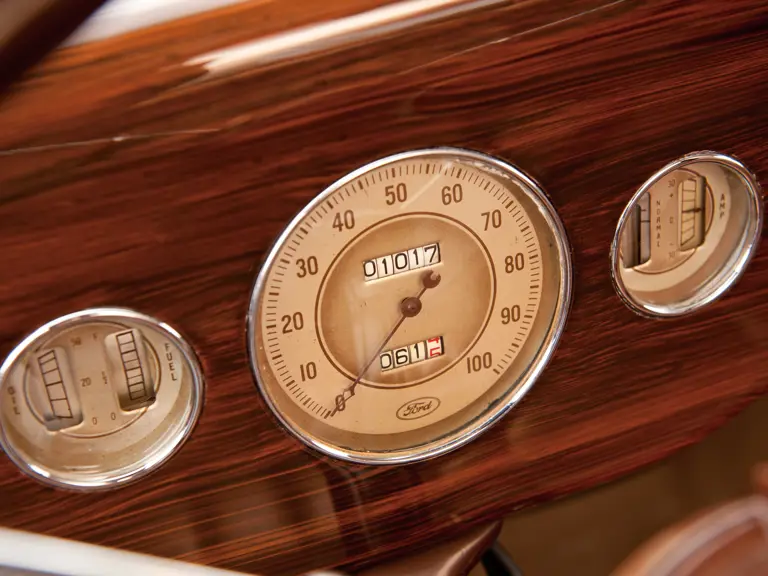

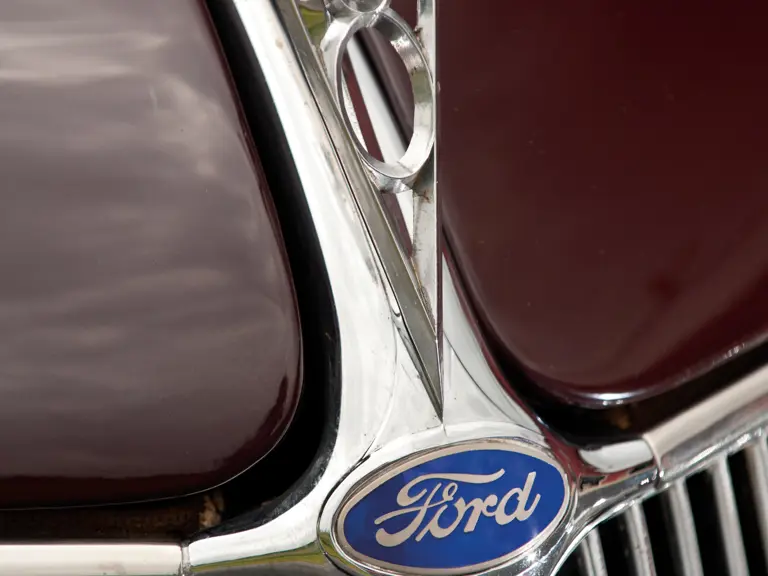
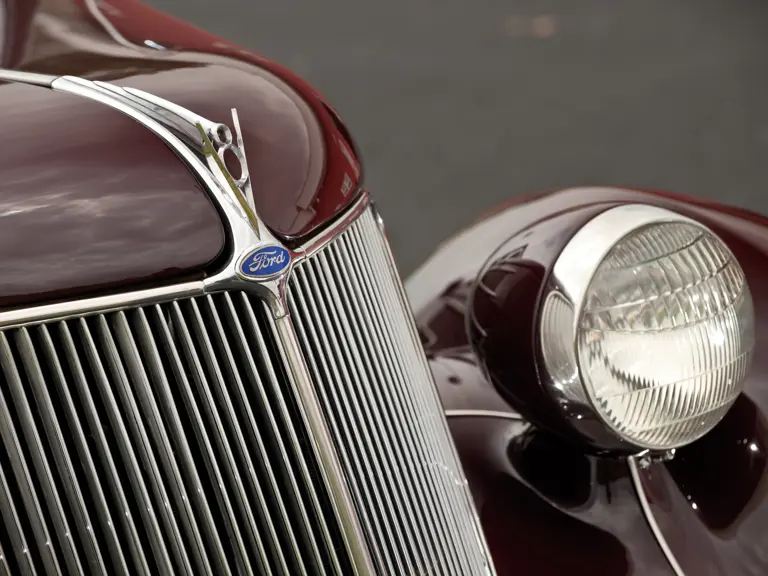
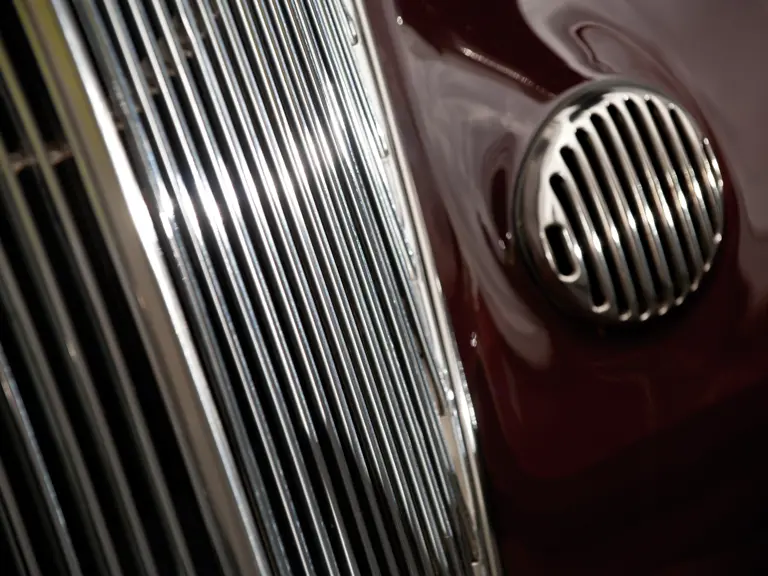
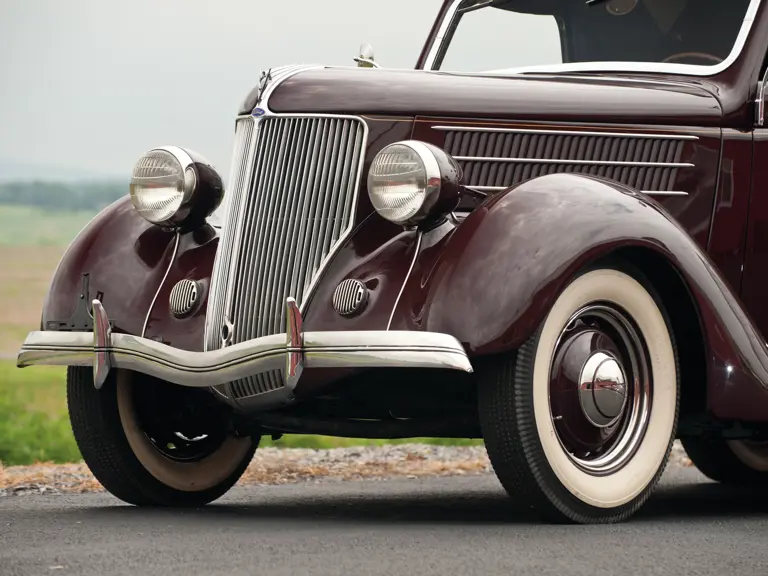


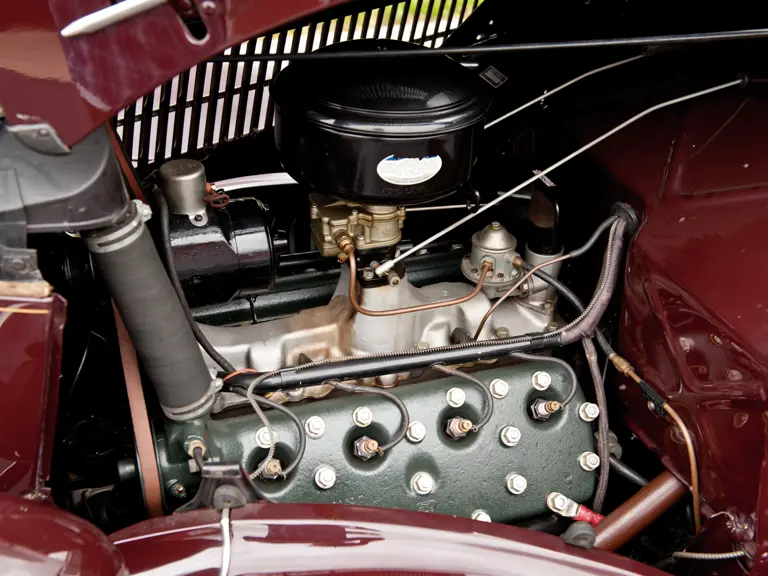
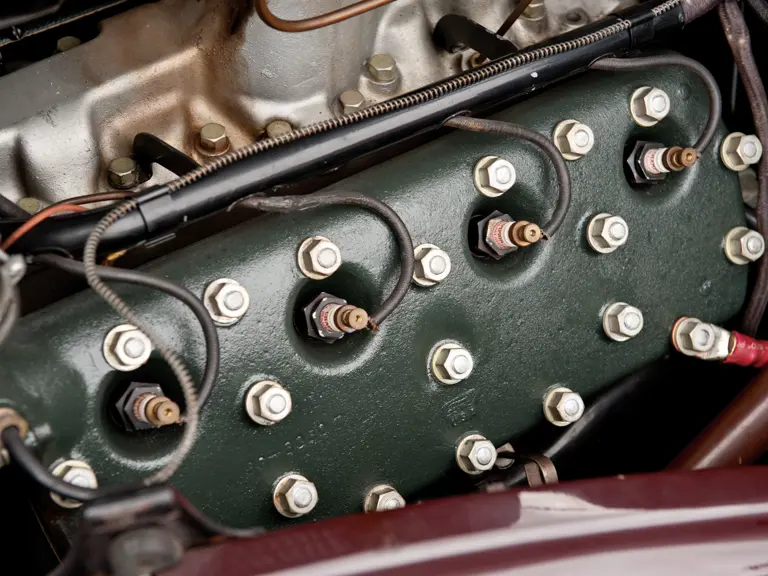
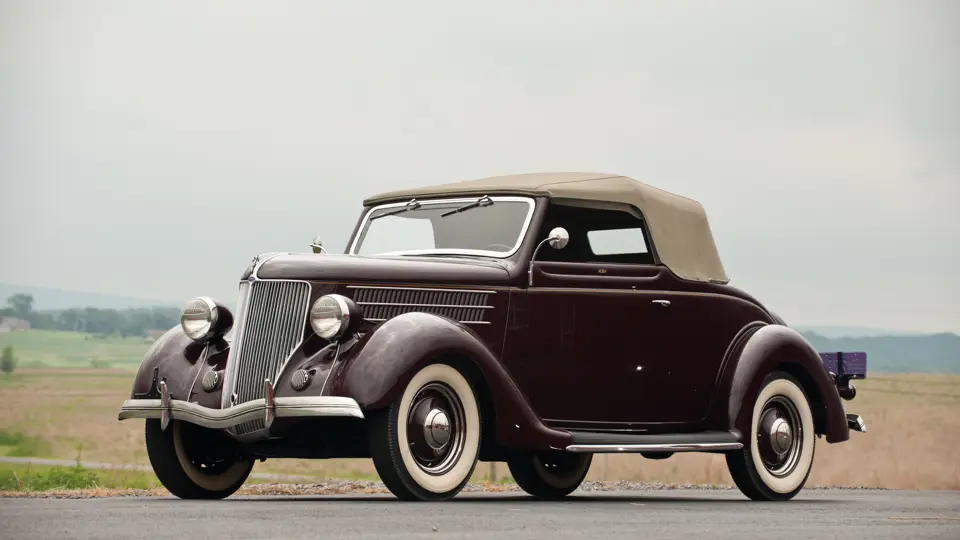
 | Hershey, Pennsylvania
| Hershey, Pennsylvania


